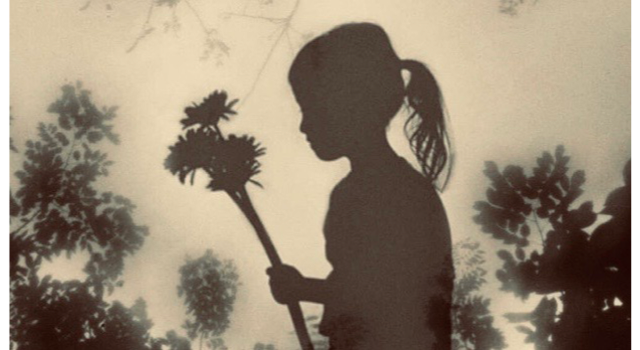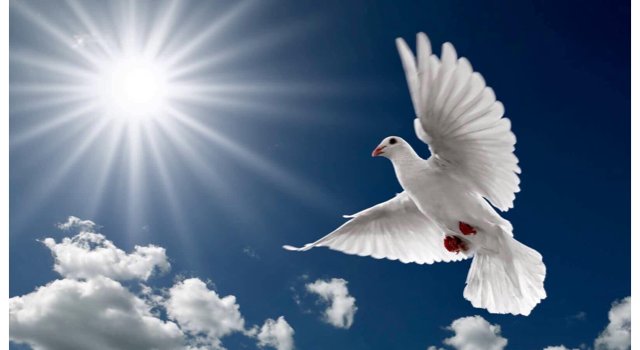The Shocking, Needless Deaths Of At Least 55 Children. A record 142,490 children in England,…

The Soviet Union Paid the Harshest Price.
In the Western popular imagination, particularly the American one, World War II is a conflict we won.
It was fought on the beaches of Normandy and Iwo Jima, through the rubble of recaptured French towns and capped by sepia-toned scenes of joy and young love in New York.
It was a victory shaped by the steeliness of Gen. Dwight D. Eisenhower, the moral fibre of British Prime Minister Winston Churchill, and the awesome power of an atomic bomb.
But that narrative shifts dramatically when you go to Russia, where World War II is called the Great Patriotic War and is remembered in a vastly different light.
Starting in 1941, the Soviet Union bore the brunt of the Nazi war machine and played perhaps the most important role in the Allies’ defeat of Hitler.
By one calculation, for every single American soldier killed fighting the Germans, 80 Soviet soldiers died doing the same.
The Soviet Union paid the harshest price: though the numbers are not exact, an estimated 26 million Soviet citizens died during World War II, including as many as 11 million soldiers.
At the same time, the Germans suffered three-quarters of their wartime losses fighting the Red Army.
( Ishaan Tharoor, 09.05.2016 )
The Red Army was the main engine of Nazism’s destruction.
It was the Western Allies’ extreme good fortune that the Russians, and not themselves, paid almost the entire ‘butcher’s bill’ for defeating Nazi Germany, accepting 95% of the military casualties of the three major powers of the Grand Alliance.
( Max Hastings )
Israel Lobby, Backed By The Israeli Embassy, Infiltrates UK Universities.
Israel is influencing student, activist and parliamentary groups in the UK, offering financial and strategic assistance in order to gather support among young organisers and shape British politics, Al Jazeera’s Investigative Unit reveals.
For six months, undercover reporter Robin (an alias) infiltrated pro-Israeli groups working to counter the powerful and growing movement against the illegal occupation of Palestinian land.
He uncovered a close link between Shai Masot, whose business card described him as a senior political officer at the Israeli embassy in London, and a network of politicians, activists and analysts in Britain who are sympathetic to Israel.
The aggressive lobbying comes as the Boycott, Divestment and Sanctions (BDS) movement swells, and as the opposition Labour Party is led by Jeremy Corbyn, a vocal supporter of Palestinian interests.
BDS enjoys wide support at British universities.
In June 2015 the National Union of Students (NUS) voted for the boycott.
A year later the NUS elected its first black, Muslim, female president: Malia Bouattia – a pro-Palestinian human rights supporter.
Unlike the NUS, the Union of Jewish Students (UJS) comprising 64 Jewish societies at British universities, strongly opposes the BDS movement.
Al Jazeera’s Investigative Unit discovered that the UJS not only received money from the Israeli embassy, but also attempted to influence the NUS presidency election, and even oust Bouattia following her victory.
( Al Jazeera, 11.01.2017 ) .. aljazeera.com
Operation Thursday.
The aim of Operation Thursday on 5 March, 1944 was to fly a force of 10,000 men, 1,000 mules, equipment and supplies into the heart of Burma.
All sorties were to be flown at night to avoid Japanese aircraft, and gliders would land troops to secure the site.
A second wave would land more troops and American engineers with their equipment to construct an airstrip so that C47 Dakotas could bring in the remaining forces.
Prior to the fly-in, the Japanese air force had been much weakened by raids on their airfields by 1st Air Commando USAAF and the RAF.
Some 78 Japanese aircrafts were destroyed and more damaged.
Brigadier Michael Calvert, commander of 77th Brigade led the first wave of 52 gliders.
Another 28 gliders were in the second wave.
Initial glider landings did not go well.
Aerial photographs failed to show ditches and trees on a landing area and these caused several of the gliders to crash on landing and 30 men were killed, and 28 wounded.
Planes en-route were ordered to return to prevent further casualties.
On the first night 35 gliders managed to land and by dawn 400 men were ready for action.
A runway was cleared and a total of 55 Dakotas flew in, followed by 579 Dakota sorties bringing in 77th Brigade and two battalions from 111th Brigade.
A second airstrip was constructed and by 8 March a force of 1,200 men, 200 mules and their equipment had been flown in.
This was the largest Allied airborne operation ever conducted until the forces under Eisenhower landed in France.
( Best of British magazine, August 2015 )
Saving The Children.
On 2 December 1938, as the clouds of war gathered over Europe, a ship docked at Harwich bringing 200 Jewish children – immigrants seeking sanctuary, facing an uncertain future.
They would be the first of thousands, brought here by the Kindertransport to save their lives. These children had been saved by British men and women who cared – men like the late Sir Nicholas Winton and his friends.
They came to Britain on the trains, planes and ships organised by British organisations dedicated to rescuing Jewish children from the Nazis.
They arrived without their parents, coming to a country that would be at war within the year, but at least they would not know the horrors of Auschwitz and the death camps that took their families.
The trigger that sparked the Kindertransport was the night of 9/10 November 1938, when Jewish businesses in Germany were attacked by Nazi mobs – their windows smashed and their businesses vandalised.
It became known as Kristallnacht (the Night of the Broken Glass) and began to confirm to a horrified world just what Hitler’s regime was capable of.
It spurred on organisations like the British Committee for the Jews of Germany and the British based Movement for the Care of Children from Germany.
( Brian Lynch, August 2015 )
German Missiles Fired At London.
Towards the end of the Second World War, thousands of V1 and V2 missiles were fired at London and South East England.
The V1 pilotless planes announced their arrival with an ominous drone, followed by silence as their motors stopped and they and their payload of explosives glided downwards along a chillingly unpredictable path.
The V2 rockets delivered instant destruction with a ‘double crack’ – the breaking of the sound barrier, then the explosion.
The most destructive V2 impact was on Woolworth’s in New Cross, South East London.
The store was filled with housewives attracted by rumours of saucepans for sale.
168 were killed.
The public outcry led the RAF to bomb suspected launch sites in The Hague, but the German crews were long gone.
Instead, 500 Dutch civilians were incinerated, an even greater horror than the New Cross explosion.
Perhaps the most remarkable fact is that more people died making the V-weapons than in the explosions they caused.
Thousands of slave labourers perished underground, working in horrific conditions.
Those who survived to the end were shot, hanged, burned alive or sent to a concentration camp by the Nazis.
In contrast, the German’s top rocket scientist, Werner von Braun, was able to arrange for himself and his team to be captured by friendly Americans.
He swiftly transferred his loyalty from the Third Reich to the US space programme, and in due course was celebrated in a movie called ‘I Aim At The Stars’.
Cynics called it ‘I Aim At The Stars, But Sometimes I Hit London’.
( Originally posted on May 2, 2012 )
Liberating Brussels.
On 3 September 1944, British Second Army units were on the move.
A long column of vehicles was making its way through the quiet Belgian countryside. German resistance to the Allied forces was weakening.
I was in a Royal Signals truck as part of 30 Corps HQ Signals unit and, as far as we were concerned, it was just another move.
But soon rumours were spreading – we were on the way to Brussels.
We really began to believe it as people appeared in the outskirts, waving and cheering.
It was the prelude to the most exciting and memorable day of my army service.
In the city centre, people were lining the streets – laughing, crying and some waving makeshift Union Flags.
Women climbed into the slow-moving vehicles, hugging and kissing the overwhelmed soldiery.
Trucks were festooned with flowers, and food and drink were thrust into our hands.
Completely surrounded, the convoy halted amid the riotous carnival atmosphere.
For the rest of the day, we were on leave, and told to report to camp in the Royal Palace grounds by dusk.
With my mates Jack and Percy, I went into a small bar.
The place was crowded, and we were feted and given more food and drink by men who told us how the Germans had scuttled away overnight.
I had my cap snatched as a souvenir and recovered it with some difficulty.
Finally, despite the protestations of the occupants of the bar, we were able to make our unsteady ways back to the truck.
( An extract from an article by Eric Savage, February 2016 )
Bad Times In Malaya, Over 2,000 Civilians Killed.
The Malayan Emergency, a 12-year guerrilla war which saw Commonwealth forces facing a communist force, the Malayan National Liberation Army (MNLA), up until 1960.
British taxes on rubber and tin caused resentment before the Second World War, then the Japanese ran the economy into the ground after they invaded.
Unemployment and famine ensued.
All this provided fertile ground for communist revolution after the war.
It began with strikes, then in 1948 three European plantation managers were killed at Sungai Siput, Perak.
In response the British banned the Malayan Communist Party which began a guerrilla campaign against the tin mines and rubber plantations.
Ironically 400 of the guerrillas were British trained former resistance fighters.
It foreshadowed the Vietnam War in many ways.
The rebels hid in the dense jungles of Malaya, there were several atrocities and blanket bombing and defoliation was actively used.
Special Constables guarded the plantations before General Sir Harold Briggs developed the Briggs Plan which tried to cut the rebels off from the rest of the population.
He would starve them out.
British patrols, full of nervous conscript virgin soldiers and uncertain who was friend or foe, sometimes employed brutal and indiscriminate tactics in the isolated villages.
Inaccurate blanket bombing of dense jungle also killed civilians.
The Briggs Plan saw the forced relocation of 500,000 rural Malayans to, effectively, concentration camps, and extra British and Commonwealth troops (including reforming the wartime SAS) placing some 40,000 men under Sir Gerald Templer.
In October 1951 the MNLA killed British High Commissioner, Sir Henry Gurney.
This was a step too far for many of the Malayans but put fear into the Europeans.
An amnesty in September 1955 saw few guerrillas turn themselves in, but the communist leader Chin Peng arranged truce talks.
These led only to an intensification of the conflict (bringing New Zealand into the war) when his demands were ignored.
Malay became independent on 31 August 1957, which effectively ended the emergency by 1958.
Chin Peng fled to China, then Thailand, but would return.
Some 6,710 MNLA guerrillas were killed.
British and Commonwealth casualties were 519 with 1,345 Malayan troops killed.
Compared to this, a staggering 2,478 civilians died.
( An extract from an article by Steve Windsor, February 2016 )



This Post Has 0 Comments